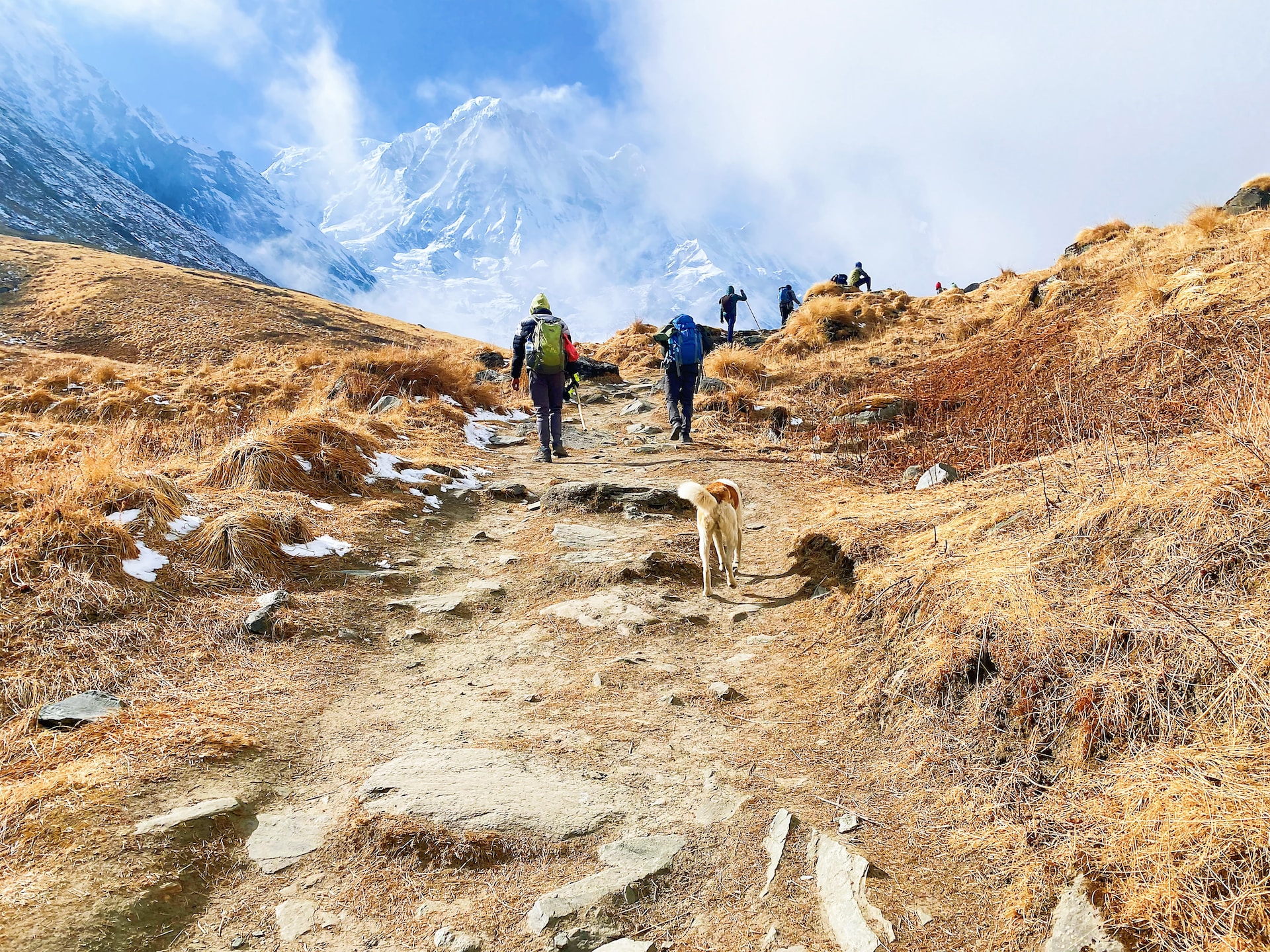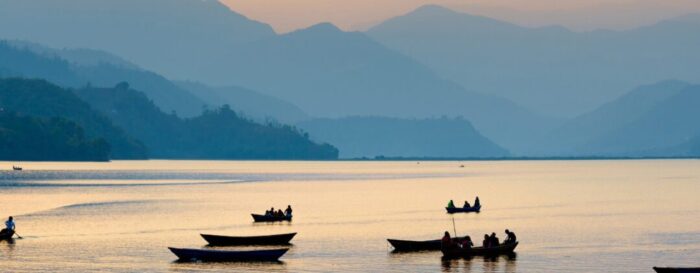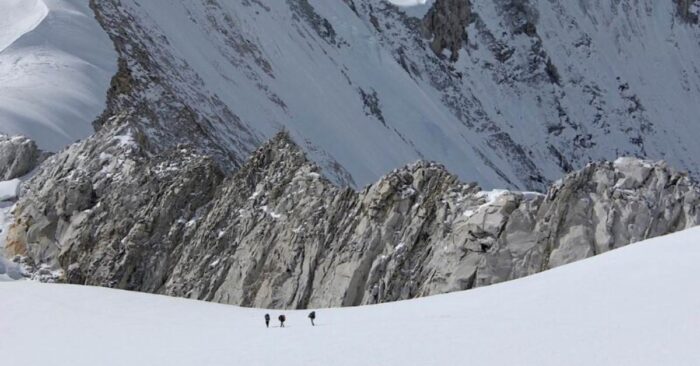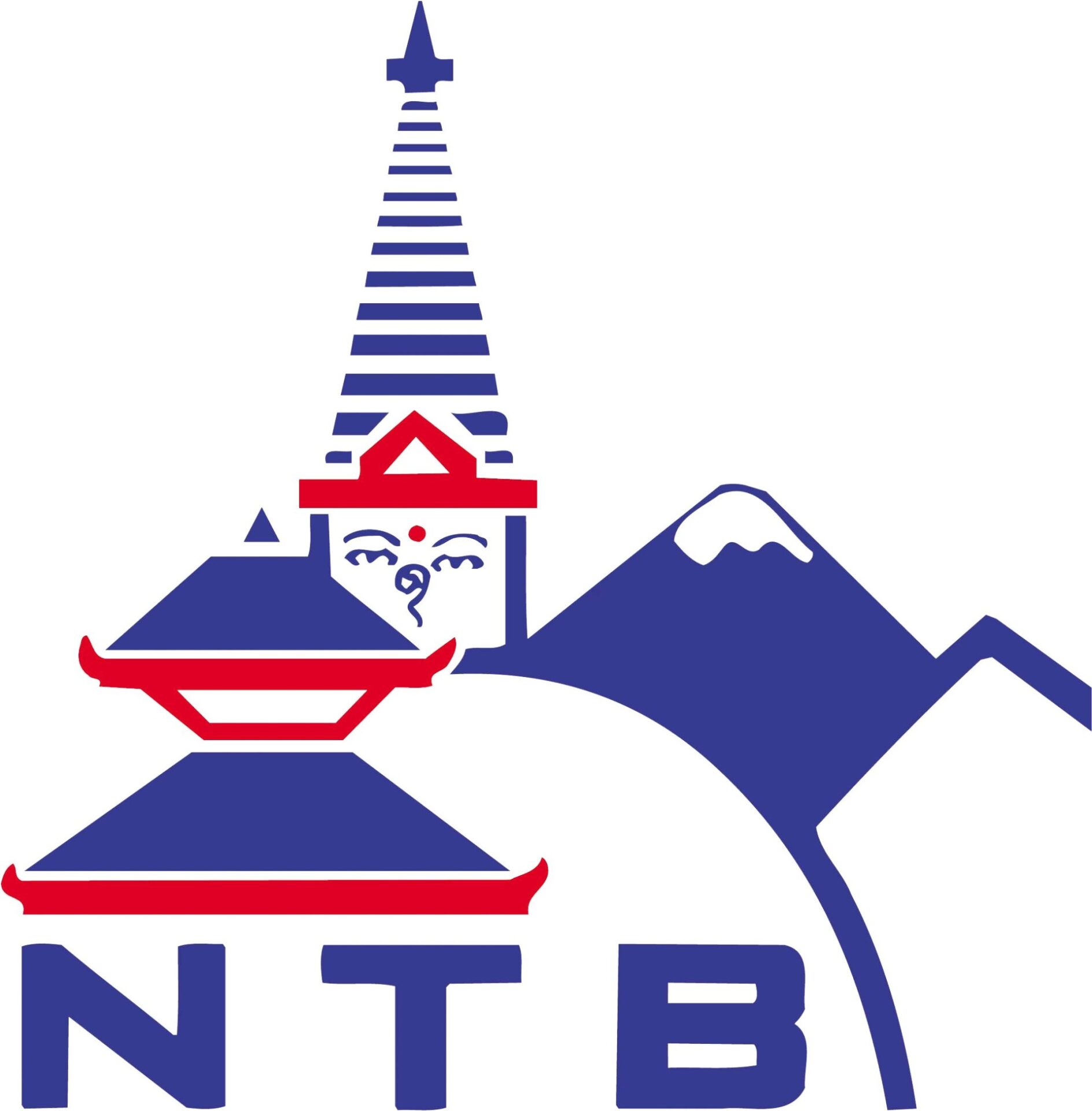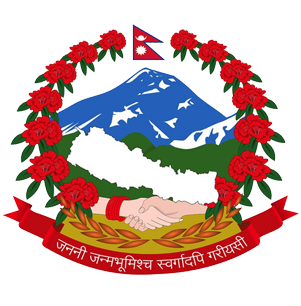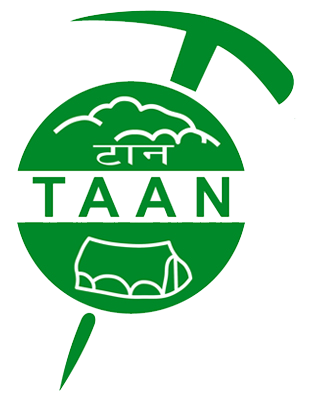Nestled within the embrace of the mighty Himalayas, Nepal captivates the soul with its unparalleled beauty. The home of 14 named mountains and several unnamed mountains, among which 8 are the highest in the world. The country is a mosaic of stunning landscapes that seamlessly blend towering peaks, verdant hills, and pristine valleys. Nepal’s topography is a work of nature’s art, from the majestic heights of the world’s highest peak, Mount Everest, to the serene lakes and verdant forests of the Annapurna and Langtang regions. Every step unveils a tapestry of diverse ecosystems, from subtropical jungles alive with exotic wildlife to alpine meadows adorned with vibrant rhododendron blooms. The cultural richness is equally enchanting, with ancient temples, monasteries, and vibrant traditions dotting the landscape. But perhaps it is the warmth of the Nepalese people, their resilient spirit, and the fusion of Hindu and Buddhist cultures that add an extra layer of magic to this Himalayan haven. Nepal’s beauty is not just in its landscapes but in the genuine smiles of its inhabitants, the rhythm of prayer flags in the wind, and the sense of awe that permeates every corner, making it a truly extraordinary destination for those seeking a profound connection with nature and humanity.
Every year, many people from different countries come to visit Nepal and witness this amazing scenery. There are numerous trekking regions in the country, each offering unique experiences. Among all the trekking regions, these three regions are the best:
Everest Region
The Everest region, also known as the Khumbu Valley, is one of the top destinations nestled in the heart of the Nepalese Himalayas. It is situated in Khumbu, a part of the Solukhumbu district, in northeastern Nepal. The world’s highest peak, Mount Everest, towers over this region, which provides an amazing and culturally diverse trekking experience at 8,848 m. This region is also home to the Himalayas, including Mt. Lhotse, Mt. Nuptse, Mt. Cho Oyu, Mt. Ama Dablam, Mt. Changtse, and trekking peaks including Mera Peak, Island Peak, and Lobuche Peak. The Everest region, also known as the Sherpa settlement of the Himalaya, is home to the villages of Thame, Khumjung, Pangboche, Kunde, and popular towns like Namche Bazaar. The region’s landscape is a spectacle of snow-capped peaks, dramatic glaciers, and the legendary Khumbu Icefall. Along the way, trekkers encounter ancient monasteries, such as Tengboche, where the spiritual ambiance mingles with breathtaking mountain vistas. The warmth and hospitality of the Sherpa people, their unique culture, and the challenging yet rewarding trails make the Everest region an extraordinary destination for those seeking both physical adventure and spiritual enrichment in the lap of the Himalayas. The journey to Everest Base Camp, one of the region’s iconic treks, is a pilgrimage for adventurers seeking to stand at the foot of the world’s highest summit.
Highlights of Everest Region
- Lukla Airport
Lukla Airport, officially known as Tenzing-Hillary Airport, is the gateway to the Everest region. Nestled among the mountains, this small yet iconic airport is renowned for its challenging approach. It is often considered one of the most dangerous airports in the world. Serving as the starting point for treks to Everest Base Camp and other destinations in the Khumbu Valley, Lukla Airport sets the stage for the adventure that awaits in the Himalayas.
- Namche Bazar
Namche Bazaar, the bustling heart of the Khumbu Valley, is a vibrant Sherpa town that serves as the main trading hub of the region. Namche offers trekkers a blend of traditional Sherpa culture and modern amenities, surrounded by towering peaks. The weekly market, with its colorful array of goods, and the breathtaking views of Everest and Ama Dablam make Namche Bazaar a crucial acclimatization stop and a cultural gem on the Everest trekking trail.
- Sagarmatha National Park
Sagarmatha National Park, a UNESCO World Heritage Site, surrounds the Everest region and is a home for diverse flora and fauna. The park’s lush forests, alpine meadows, and towering peaks provide a pristine environment for rare species like the red panda and snow leopard. Trekkers pass through the park, contributing to the conservation efforts while immersing themselves in the breathtaking landscapes that make Sagarmatha National Park a natural treasure.
- Tengboche Monastery
Along the Everest trekking route, Tengboche Monastery is a spiritual haven located at an elevation of 3,867 m. The monastery, with its exquisite architecture and panoramic views of Ama Dablam, Everest, and other peaks, is a sacred site for both trekkers and the local Sherpa community. Visitors often pause to absorb the serene atmosphere and witness traditional Buddhist ceremonies.
- Mt. Everest
The ultimate highlight of the Everest region, Mount Everest, or Sagarmatha in Nepali, stands at an awe-inspiring 8,848 m, which makes it the world’s highest peak. Trekkers catch their first glimpse of Everest from various vantage points along the trail, and reaching Everest Base Camp is the conclusion of the journey, offering a unique perspective of the legendary mountain.
- Kala Patthar
Kala Patthar, a trekker’s vantage point close to Everest Base Camp, provides one of the best panoramic views of Mount Everest. As the highest point on the classic Everest Base Camp trek, Kala Patthar provides a surreal sunrise or sunset spectacle where the entire Everest massif is shimmering in golden colors, creating an unforgettable visual feast.
- Gokyo Lakes
The Gokyo Lakes are a group of aquamarine glacial lakes encircled by towering peaks, and they are tucked away in the Gokyo Valley. The trek to Gokyo takes adventurers off the beaten path, offering a tranquil alternative to the Everest Base Camp route. Renowned for its stunning reflections of Cho Oyu, the world’s sixth-highest mountain, the Gokyo Lakes region is a serene and mesmerizing highlight of the Everest trekking experience.
Annapurna Region
The Annapurna region, a majestic expanse in central Nepal, is a trekker’s paradise renowned for its diverse landscapes and cultural richness. Home to the Annapurna Mountain range, including the iconic Annapurna Massif and Dhaulagiri, the region encompasses subtropical forests, terraced fields, and alpine meadows, offering a kaleidoscope of natural beauty. Trekkers traverse through traditional villages, where hospitable Gurung and Magar communities showcase their unique traditions. The Annapurna Circuit, a classic trek, circles the entire Annapurna Massif, providing stunning views and an immersive cultural experience. The Annapurna Base Camp Trek, another popular route, leads to a natural amphitheater surrounded by towering peaks. The region also boasts the famous Poon Hill vantage point, offering panoramic sunrise views. With its diverse topography, rich cultural tapestry, and awe-inspiring mountain vistas, the Annapurna region stands as an enchanting destination that captures the essence of Nepal’s natural and cultural wonders.
Highlights of Annapurna Region
- Pokhara
Pokhara is a picturesque entry point to the Annapurna region, nestled away next to the tranquil Phewa Lake and encircled by the Machapuchare (fishtail) and Annapurna Mountain ranges. This lakeside city provides a tranquil contrast to the rugged mountain terrain, offering stunning reflections of the Himalayas on the lake’s surface. Pokhara serves as a starting or ending point for many Annapurna treks, and its relaxed atmosphere, vibrant markets, and adventure activities make it a must-visit destination.
- Ghandruk
A charming Gurung village situated on a hill, Ghandruk is a cultural gem in the Annapurna region. Its traditional stone houses, intricately carved wooden windows, and terraced fields create a postcard-perfect setting. Ghandruk offers a glimpse into the local way of life, and trekkers often stay here to experience the warm hospitality of the Gurung people. The village also provides panoramic views of the Annapurna and Machapuchare peaks.
- Poon Hill
Poon Hill, a popular vantage point along the Annapurna Circuit and Ghorepani Poon Hill trek, is renowned for its breathtaking sunrise views. Early in the morning, hikers climb to this viewpoint to see the sun reflecting the Dhaulagiri and Annapurna ranges in a golden glow. The panoramic spectacle includes Machapuchare and surrounding peaks, creating a mesmerizing vista that rewards the effort of the pre-dawn trek.
- Annapurna Massif
The stunning Annapurna Massif, the region’s top attraction, is made up of multiple peaks, the highest of which is Annapurna I, ranking as the 10th highest mountain in the world. Treks in the Annapurna region offer close encounters with these majestic peaks, whether it’s the Annapurna Circuit or the trek to Annapurna Base Camp. The dramatic landscapes, deep gorges, and high mountain passes contribute to the allure of this massif, making it a magnet for trekkers and mountaineers alike.
- Annapurna Conservation Area
The Annapurna Conservation Area (ACA) is the largest protected area in Nepal, covering diverse ecosystems and providing a habitat for a wide range of flora and fauna. The Annapurna Conservation Area (ACA) is a biodiversity hotspot that includes lush forests, alpine meadows, and high-altitude deserts. Trekkers pass through this conservation area, contributing to sustainable tourism practices that help preserve the region’s natural splendor and support local communities.
Langtang Region
The Langtang region, often referred to as the “Valley of Glaciers,” is a hidden gem situated to the north of Kathmandu, offering a pristine trekking experience. This area, which is part of Langtang National Park, has a variety of landscapes, including high alpine meadows and lush temperate forests. The Langtang Valley trek takes trekkers through traditional Tamang villages, where ancient customs and rich cultural practices survive. The journey unfolds against a backdrop of soaring peaks, including Langtang Lirung and Ganesh Himal. The sacred Gosaikunda Lake, a high-altitude alpine lake, is another highlight in the region. The Langtang region trek provides a perfect blend of natural beauty, Himalayan grandeur, and cultural immersion, making it an appealing choice for those seeking a trekking adventure off the beaten path.
Highlights of Langtang Region
- Langtang Lirung
The Langtang Lirung is the highest peak of the Langtang Himal range, standing at 7,227 m above sea level. Langtang Lirung is a majestic peak that captivates trekkers with its snow-covered slopes and impressive presence. The scenic trails in the Langtang Valley offer awe-inspiring views of this snow-clad giant. The closeness of Langtang Lirung adds a dramatic and breathtaking backdrop to the entire trekking experience, creating a sense of grandeur and serenity.
- Gosaikunda Lake
Situated within the Langtang National Park, Gosaikunda Lake is a sacred alpine lake that attracts trekkers with its pristine beauty. The trek to Gosaikunda takes adventurers through lush forests, picturesque meadows, and traditional Tamang villages before reaching this serene high-altitude lake. Snow-capped peaks, including Langtang Lirung, encircle the lake. It is significant culturally and draws pilgrims in August for the full moon festival. Its reflective waters and tranquil ambiance make Gosaikunda a mesmerizing destination
- Langtang National Park
The Langtang National Park symbolizes the Langtang region’s diverse ecosystems. Covering an area of 1,710 sq. km, the park is a home for various flora and fauna, including red pandas, Himalayan tahr, and numerous species of birds. The trek through Langtang National Park offers a chance to witness the beauty of rhododendron forests,oak woodlands, bamboo groves, and high alpine meadows, contributing to the region’s ecological significance.
- Tamang valley
The Tamang Valley, inhabited by the Tamang ethnic group, is a cultural treasure located in the Langtang region. The trek through Tamang villages provides a unique opportunity to immerse yourself in the rich heritage of the Tamang people. With their distinct language, customs, and vibrant festivals, Tamang villages such as Gatlang and Thuman offer a genuine cultural experience, allowing visitors to engage with local traditions and witness the warm hospitality of these Himalayan communities. The Tamang Valley adds a cultural dimension to the Langtang region trek, creating a holistic experience that combines natural beauty with the richness of Himalayan traditions.

